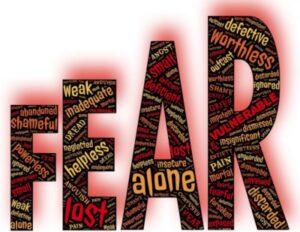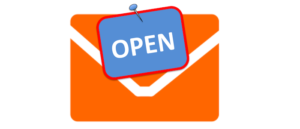Creating effective marketing campaigns, adverts, and sales copy doesn’t need to be daunting. There are certain psychological triggers that if understood and used correctly can significantly improve your marketing efforts. If you can apply these psychological principles you will attract and retain more customers, reduce buyer resistance, and boost sales.
Here’s a list of 6 powerful triggers that you can learn and use straight away to improve your results.
1. Honesty
When it comes to your marketing there’s a golden rule you should always stick to – honesty is the best policy. How many times have you looked at an ad, read a sales letter, or seen a TV commercial and thought the claims being made were total B.S.???
You are a smart consumer. Your customers are also smart. In fact, today’s consumers are more savvy than ever. Our customers are savvy shoppers who are hip to some of the tricks and methods used by the advertising industry to get us to buy. Some of the old sales and marketing techniques that used to work back in the day just won’t cut with the consumers of today. That’s because a lot of the advertising was based on bravado or overhyped claims, which in reality didn’t stack up or amount to much.
Nowadays customers don’t want bravado – they value honesty and integrity and will buy from brands who mirror and exhibit those values.
Joe Sugarman was a legendary marketer and copywriter, and author of the excellent Adweek Copywriting Handbook. He put it best when he said:
“Consumers really appreciate the truth. And since they are smarter than you or I, you can’t fake the truth. They’ll pick out a phony statement every time.”
We instinctively get turned off if we feel that we are being lied to or manipulated in some way. We put up our defensive barriers straight away.
Being honest in your communications prevents your customers from putting those barriers up. They allow you in much more because they trust you. If they trust you, they’ll like you, and as every good salesperson knows – people buy from people who they know, like, and trust!
Be honest about your goods and services. Don’t promise results if your product can’t deliver them. Talk about the results your prospect can get from using your product or service, but don’t tell lies or over-exaggerate.
If you can back up what you’re saying with real testimonials and customer reviews that’ll boost your credibility. You can even detail some of the flaws of your product as a means of being transparent. If you do this right this can work wonders for your brand.
Example:
Guinness did this very well. A pint of Guinness takes almost 2 minutes to pour and settle before it is served. That’s much longer than a normal beer.
The company doesn’t shy away from this fact or try to hide it. They talk about it openly in their campaigns and use the slogan – “Good things come to those who wait.” They took one of their product’s “flaws” and turned it into a strong USP by being honest about it and re-framing it in the minds of their consumers.
2. Simplicity
Your advertising should be focused on trying to achieve one goal, and one goal only. Whether that goal is to get someone to click a link, subscribe to your email list, or buy something – you should only present your audience with ONE GOAL.
You should eliminate everything from your ad or sales copy that doesn’t facilitate your one goal. The less thinking your prospect has to do when reading or viewing your ad, the better your results will be.
If you present them with too many calls-to-actions, and options they’ll get overwhelmed. The more options you give your prospects – the more they’ll experience decision fatigue and not know what to do – so they’ll most likely end up doing nothing.
Make it simple for them by only focusing on the one action you want them to take.
If you want your reader to click a link in the ad then make that the goal, and don’t include any other options. Too many marketers try to cram such much into their ads that their ad loses focus and doesn’t generate the response they hoped for.
Don’t overcomplicate your marketing. Keep your sales copy and calls-to-action simple, and you’ll be amazed at how much your results improve.
3. Storytelling
Storytelling is an art form that has been around as long as people have been communicating. It has existed in all cultures around the world since time immemorial.
We love to tell and hear stories. We use them for entertainment, to convey information, and to educate.
There’s a lot written about the power of stories and how they can be used in marketing and sales to influence your prospects to act, position your product or service, and engage your target audience on an emotional level.
Stories make selling frictionless, entertaining, and effective. Why?
Because stories can create an emotional bond that grabs your prospect’s attention and holds it long enough for you to convey your message. Stories are a vehicle for being able to engage the emotional side of your prospect’s personality.
People buy on emotion and justify with logic – so the key is to be able to tap into the emotions of your target market, and stories are a proven way of doing this. Brain research studies have even shown that when people are listening to a story their brainwaves actually synchronise with the storytellers!
Think about that for a moment…..You can literally sync the brainwaves of your listeners with yours by using the power of storytelling. That’s how powerful stories are.
Studies have also shown that people are 22 times more likely to remember facts when they are presented in story form. When you create stories around your products and services you are tapping into a powerful psychological trigger.
Use stories in your marketing to be more memorable, and to connect with prospects on an emotional level, they’ll be more receptive to liking and buying from you as a result.
4. Urgency
Creating a sense of urgency within your prospects sparks a powerful drive within them which makes them act. Urgency makes people take action. Why does it do this?
A sense of urgency:
- Builds anxiety and triggers the fear of missing out
- Grabs and holds your prospect’s attention and focuses it on your offer
If your customers are on the fence you need to give them a nudge in the right direction to get them to act on your offer – and creating a sense of urgency can achieve that.
How to build a sense of urgency
Using time-related words that convey scarcity
Words such as:
- Hurry
- Limited quantity available
- While stocks last
- Act now before its too late
- Offer ends soon
Examples:
“Get 6 months memberships free if you sign up within 24 hours!”
“Buy one get one free on all products – offer ends at midnight”
“Get FREE shipping on all purchases made today – act now!”
“Limited quantity of 100 available – grab yours now”
Use real-time sales figures
Highlighting how many people have brought your products in the last 24 hours (or any time frame) gives you credibility and also acts as a powerful form of social proof that reinforces your customer’s desire to buy. To add a further sense of urgency to this, you can have a real-time message of how many people are looking at your offer in real-time.
Hotel booking websites and airlines use this very effectively to create urgency and make people book.
Examples:
- “6 people are looking at this hotel room right now”
- This triggers the fear of missing out on the deal and makes people urgently want to book now.
- “4 people booked in the last 24hrs”
This acts as powerful social proof and enforces the buying decision. If you have a limited number of products this works wonders.
Tell your prospects you’re pulling the offer away
Again, this creates the anxiety of missing out on a great deal. When you tell your prospects that you’re pulling your offer in a certain amount of time they are forced to make a decision – buy or miss out.
The fear of missing out is a powerful motivator and creates the necessary anxiety to move people to take urgent action.
Example:
- “LAST CHANCE – 60% off my premium app building training”
Experiment with different offers according to the market you are targeting.
5. Fear
Fear is a very powerful psychological trigger and one of the great motivators that cause us to move into action.
The sense of urgency is partly based on the emotion of fear – it is the fear of missing out on a great deal or opportunity that creates anxiety – which in turn creates the sense of urgency.
But fear is also used in other ways. The fear of anything that threatens our own survival and that of our loved ones is one of the most deeply rooted and powerful psychological triggers. Fear of the unknown and fear of worse-case scenarios are powerful motivators.
You can see examples of fear-based marketing all around you. The insurance industry is based primarily on the emotion of fear. People are fearful of what will happen to their loved ones if they die unexpectedly, so they take out expensive life insurance policies. Travelers are afraid of their flights or hotels being canceled or so they take out travel insurance.
People install CCTV and burglar alarms because they are afraid their homes may be burgled. People may buy and carry a gun or mace because they are afraid of being attacked.
If your product or service solves a problem, you can use a little bit of fear-based marketing to make them aware of what will happen / not happen if they don’t buy your product.
Just remember to be ethical, and to use discretion when using fear as a psychological marketing trigger.
6. The desire to belong
One of the strongest human desires we all have is the desire to belong. This may not always be a conscious desire – it’s often an unconscious desire that we all have.
Belonging to a certain group gives us a sense of identity. Certain products and brands become successful not because they are the best in the market, but because they have attained a certain collective identity and status which make them desirable.
Harley Davidson is a great example. There are bikers who own motorcycles, and there are bikers who own Harley’s. When people buy a Harley they aren’t buying one because of the features or re-sell value (even if that’s why they justify logically to themselves).
The people who buy a Harley Davidson buy one because they subconsciously desire to be part of that exclusive club of Harley Davidson owners. The Harley Davidson brand and motorcycle have an image and a reputation – and owning one is a status symbol.
When you own a Harley you take on that brand image and reputation by way of association – you belong to that exclusive group and therefore, at the subconscious level, you identify as a part of that group and (in your mind) acquire the characteristics and attributes of that group.
The people at Harley Davidson know this all too well. That’s why they started the Harley Owners Group. They have turned owning a Harley into a lifestyle and built a community of enthusiasts for whom owning a Harley has given them their identity and a sense of belonging to something bigger than themselves.
Apple is another good example. They have created an almost cult-like following of customers who live and die by Apple products and wouldn’t consider using another brand for a second. People that use Macs rather than PCs feel a part of something – many of them think they are more creative or more unique than the average PC user. They happily belong to, and identify with being a member of the Apple family.
If you can create a community around your brand and position your product or service accordingly, then you can tap into the strong psychological desire to belong. You’ll attract more customers and increase your customer lifetime value as they continue to feel like part of your tribe.
Be ethical when applying these triggers
There’s absolutely nothing wrong with using psychology in your marketing to persuade or influence your customers. Psychology and marketing go hand in hand. The only problem I have is when I see marketers using these principles and insights unethically.
That is why the first trigger at the top of the list was honesty.
If you are marketing and selling products and services that add value to people’s lives, then you are being of service to them and can be proud of what you do. Sometimes people need a nudge, they may not be aware of the solution to their problem and they may need to be ethically persuaded or influenced to take action.
If what you are selling meets and surpasses their expectations, and provides more use value than what you have taken from them in monetary value, you have done your job as an honest and ethical marketer.
Have fun exploring, trying, and testing these triggers.




